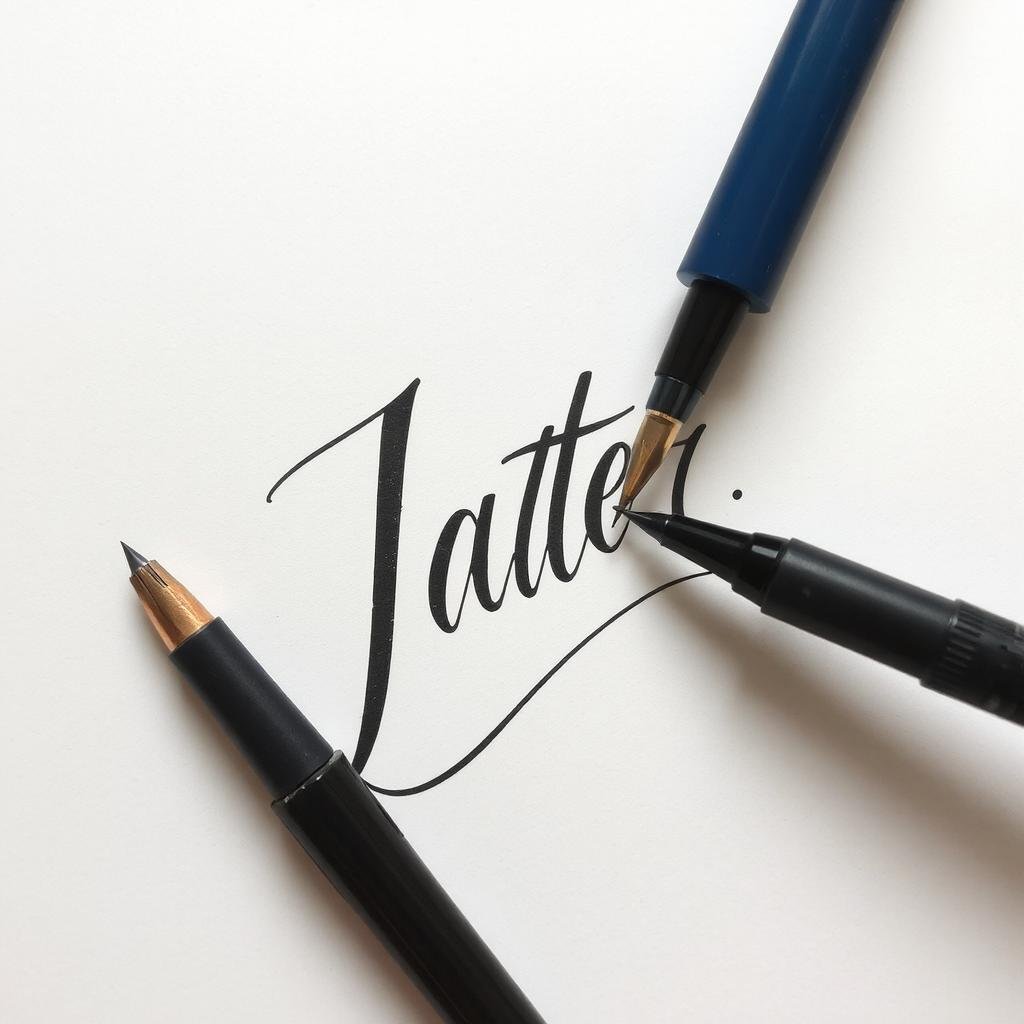
Brush lettering is a versatile and expressive art form, but choosing the right tools is crucial to achieving professional results. This guide will highlight the best pens for brush lettering, their pros and cons, and tips to help you select the perfect option for your needs. With a focus on readability and detailed comparisons, this article ensures that beginners and advanced letterers alike can make informed decisions.
What Makes a Brush Pen Ideal for Lettering?
Brush pens are designed with flexible tips that allow for dynamic stroke variations. Key factors to consider include:
- Tip Flexibility: Determines the range of line thickness.
- Ink Quality: Affects vibrancy and durability.
- Ease of Control: Important for beginners to maintain precision.
- Durability: Ensures the pen lasts through extensive practice.
Top Picks for Brush Lettering

Find Pens for Brush Lettering
Here are some of the best pens for brush lettering, along with their features, advantages, and disadvantages:
| Brush Pen | Pros | Cons |
|---|---|---|
| Tombow Dual Brush Pens | – Dual tips (fine and brush). – Blendable ink for shading. – Wide color range. | – Expensive compared to other brands. |
| Pentel Touch Sign Pen | – Affordable and widely available. – Balanced flexibility and control. | – Ink vibrancy and longevity may be lacking. |
| Sakura Pigma Micron Brush | – Waterproof and fade-resistant ink. – Multiple nib sizes for detailed work. | – Finer tips may be challenging for beginners. |
| Tombow Fudenosuke Brush Pen | – Offers hard and soft tip varieties. – Smooth ink flow. | – Limited versatility compared to broader tips. |
Detailed Review of Each Pen
1. Tombow Dual Brush Pens–check price
These pens are widely regarded as some of the best pens for brush lettering due to their versatility and quality.
- Features: Dual tips—one for fine lines and the other for broad strokes.
- Best For: Blending and creating vibrant designs.
- Example Use: Perfect for creating ombre effects or large-scale lettering projects.
2. Pentel Touch Sign Pen–check price
A great choice for beginners due to its affordability and ease of use.
- Features: Flexible tips with good control for detailed work.
- Best For: Everyday lettering practice.
- Example Use: Writing in journals or creating simple greeting cards.
3. Sakura Pigma Micron Brush Pen–check price
Designed for archival work, these pens ensure your art stands the test of time.
- Features: Fade-resistant ink and various nib sizes.
- Best For: Intricate designs and professional projects.
- Example Use: Lettering on invitations or artwork that requires longevity.
4. Tombow Fudenosuke Brush Pen–check price
These pens are ideal for mastering pressure control.
- Features: Two tip varieties (hard and soft).
- Best For: Beginners and those looking for precision.
- Example Use: Practicing alphabets or creating minimalist designs.
Factors to Consider When Choosing the Best Pen

Find Pens for Brush Lettering
1. Your Skill Level
- Beginner: Opt for pens with moderate flexibility, such as the Pentel Touch Sign Pen.
- Intermediate: Experiment with Tombow Fudenosuke Pens for greater control.
- Advanced: Explore Sakura Pigma Micron for intricate and archival-quality work.
2. Project Requirements
- Large-Scale Projects: Tombow Dual Brush Pens are better suited due to their wide tips and color range.
- Detail-Oriented Projects: Finer tips like those of Sakura Pigma Micron excel in precision.
3. Budget Constraints
Brush pens vary widely in price. Beginners can start with affordable options like Pentel Touch Sign Pens and upgrade as they progress.
How to Maximize Your Brush Pen’s Potential
1. Choose the Right Paper
High-quality, smooth paper minimizes ink bleeding and prevents pen tip damage. Recommended options include:
- Marker Paper
- Watercolor Paper
2. Practice Regularly
Consistent practice ensures steady improvement. Begin with basic strokes before advancing to complex designs.
3. Experiment with Techniques
- Try blending colors for gradients.
- Add shadows for depth and dimension.
Tips for Maintaining Brush Pens
Proper care of your tools ensures their longevity and performance:
- Cleaning: Use a damp cloth to wipe excess ink off the tips.
- Storage: Keep pens capped and store them horizontally to prevent ink from drying out.
- Use Smooth Paper: Avoid rough textures that can fray the brush tips.
Advanced Techniques to Explore
Once you’ve mastered the basics, challenge yourself with advanced techniques:
- Watercolor Effects: Use water-based brush pens on damp paper for a dreamy look.
- Layering Colors: Create dynamic visuals by layering lighter shades over darker ones.
- Flourishes: Add decorative swirls to enhance your designs.
Why These Pens Are the Best

Find Pens for Brush Lettering
Tombow Dual Brush Pens
- Superior blendability and dual-tip versatility make these stand out.
- Recommended for both beginners and professionals.
Pentel Touch Sign Pen
- An excellent choice for learning pressure control.
- Cost-effective and reliable for everyday use.
Sakura Pigma Micron Brush
- Fade-resistant ink ensures longevity, making it a staple for serious projects.
Tombow Fudenosuke Brush Pen
- The hard and soft tip options cater to different skill levels, offering adaptability.
Conclusion
Choosing the best pens for brush lettering depends on your skill level, project needs, and budget. With options like the versatile Tombow Dual Brush Pens and the beginner-friendly Pentel Touch Sign Pen, there’s a perfect pen for everyone. Combine high-quality tools with consistent practice and proper care to unlock your full creative potential.
Whether crafting intricate invitations or bold wall art, brush lettering pens bring artistic visions to life. Embrace this art form today and elevate your creative projects with precision and style!